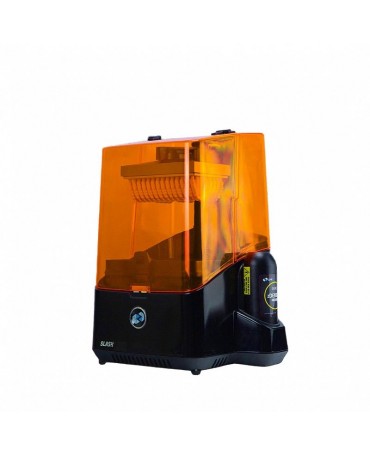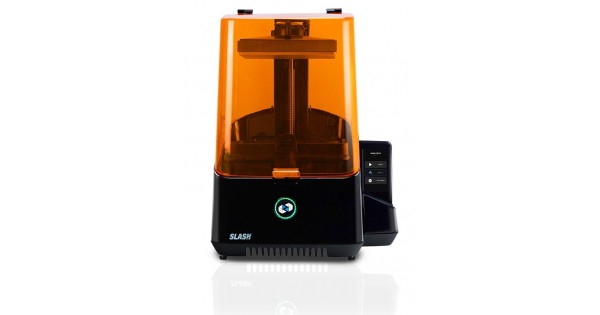

Speaking in practical terms, that is a high enough resolution that you will never need to think about it.

It has an 8.9” 4K monochrome LCD with a resolution of 3840 x 2400, which provides a stated XY resolution of 49.8µm.

Thankfully, the IBEE prints extremely well. Still, a solid machine is pointless if it doesn’t print well. Frankly, I don’t think there is anything UNIZ could have done to make the IBEE feel more solid. It is constructed from sheet metal and machined aluminum. There is no cheap injection-molded plastic here. The machine is heavy because it is very well-built. That is large enough to make the IBEE useful for general 3D printing and not just tiny D&D figurines - though it is great for those, too. The IBEE is big because it has a very generous build volume for a resin 3D printer: 192 x 120 x 220 mm (7.5 x 4.7 x 8.7 inches). My first thought upon unboxing the IBEE was that the machine is both big and heavy. My UNIZ IBEE review unit arrived on my doorstep in a very sturdy box, with the machine packed well in strong foam. That may seem a bit pricey, but the IBEE is providing a lot for that money. The UNIZ IBEE is a midrange model that costs $899.00 on the Uniz store. But those cheap models leave a lot to be desired. Budget resin 3D printers can now be bought for as little as $200. Fortunately, prices have dropped dramatically in recent years. Until a few years ago, resin 3D printers were also far more expensive than most consumer FFF 3D printers. Those factors make resin 3D printers ideal for figurines and professional-looking mechanical parts. At the highest detail settings, resin 3D prints also have virtually invisible layer lines. But resin 3D printers almost always offer far better print quality than FFF 3D printers, particularly when it comes to reproducing fine details in models. Resin 3D printers aren’t nearly as common as their FFF (Fused Filament Fabrication) counterparts and there is good reason for that the resin itself is messy and inconvenient to work with, the resin is more expensive that most conventional thermoplastic filament, and resin printers generally have smaller print volumes than similarly-priced FFF 3D printers. I’ve spent the past couple of weeks putting the UNIZ IBEE through the ringer, so get comfy and read on to find out if this is a printer you should consider purchasing. The IBEE is now on sale to the wider public and the folks at UNIZ were kind enough to send me a unit to review. The new UNIZ IBEE resin 3D printer recently had a successful Kickstarter launch, with nearly $275,000 in backer funding raised.


 0 kommentar(er)
0 kommentar(er)
